 General
General  General Archive
General Archive  Top Cleveland Sports Figures, By the Numbers - #1
Top Cleveland Sports Figures, By the Numbers - #1
This is one installment in a team effort by The Cleveland Fan, highlighting the top local sports figures by jersey number. Please weigh in with your thoughts on the "Boards". As David Letterman would say, "For entertainment purposes only; please, no wagering"
---
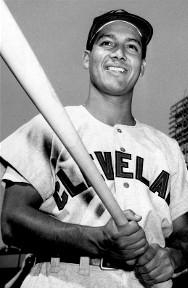 For some reason, our city has not been blessed with a great number of notable players wearing the #1. A handful of Indians infielders of varying importance surfaced in our search....along with a Browns wide receiver with a pop star namesake, and a couple of solid but mostly unspectacular point guards for the Cavs. To find the best of the lot, we had to go back to a time and a team too distant for even this old-timer of a writer to remember first hand.
For some reason, our city has not been blessed with a great number of notable players wearing the #1. A handful of Indians infielders of varying importance surfaced in our search....along with a Browns wide receiver with a pop star namesake, and a couple of solid but mostly unspectacular point guards for the Cavs. To find the best of the lot, we had to go back to a time and a team too distant for even this old-timer of a writer to remember first hand.
The 1954 Cleveland Indians won 111 games, and their .721 winning percentage still stands as the best in major league baseball in the last 100 years. Playing a 154-game schedule, their percentage tops even the 1998 Yankees (114 wins, .704) and the 2001 Seattle Mariners (116 wins, .716). You might say the fact that baseball’s best team of the modern era was then swept in the World Series by Willie Mays and the Giants is what makes them an authentic Cleveland sports story, albeit one for another day.
That Indians team is remembered mostly for it’s starting pitching staff of Feller, Lemon, Wynn, Houtteman and Garcia, which is considered one of the best, if not the best, in baseball history.
And they had sticks...notably third baseman Al Rosen, who was coming off a 1953 season in which he won the AL MVP Award after leading the American League in homers, RBI, slugging percentage, total bases, OPS and WaR...and he didn’t even know what those last two stats were. When Rosen slipped to a mere 24 HR and 102 RBI in ‘54, All-Star centerfielder Larry Doby took over, winning the AL crown in home runs and RBI, and coming in 2nd for MVP.
If you asked today’s Tribe fans what member of that Indians team won the AL batting title though, few of them could come up with the name of the Mexican-born second baseman who had a career year in ‘54, hitting .341 and finishing 3rd in the AL MVP balloting. But once we looked around at the (admittedly rather weak) competition, it wasn’t difficult for us to select Bobby Avila as the best Cleveland player to ever wear the #1.
---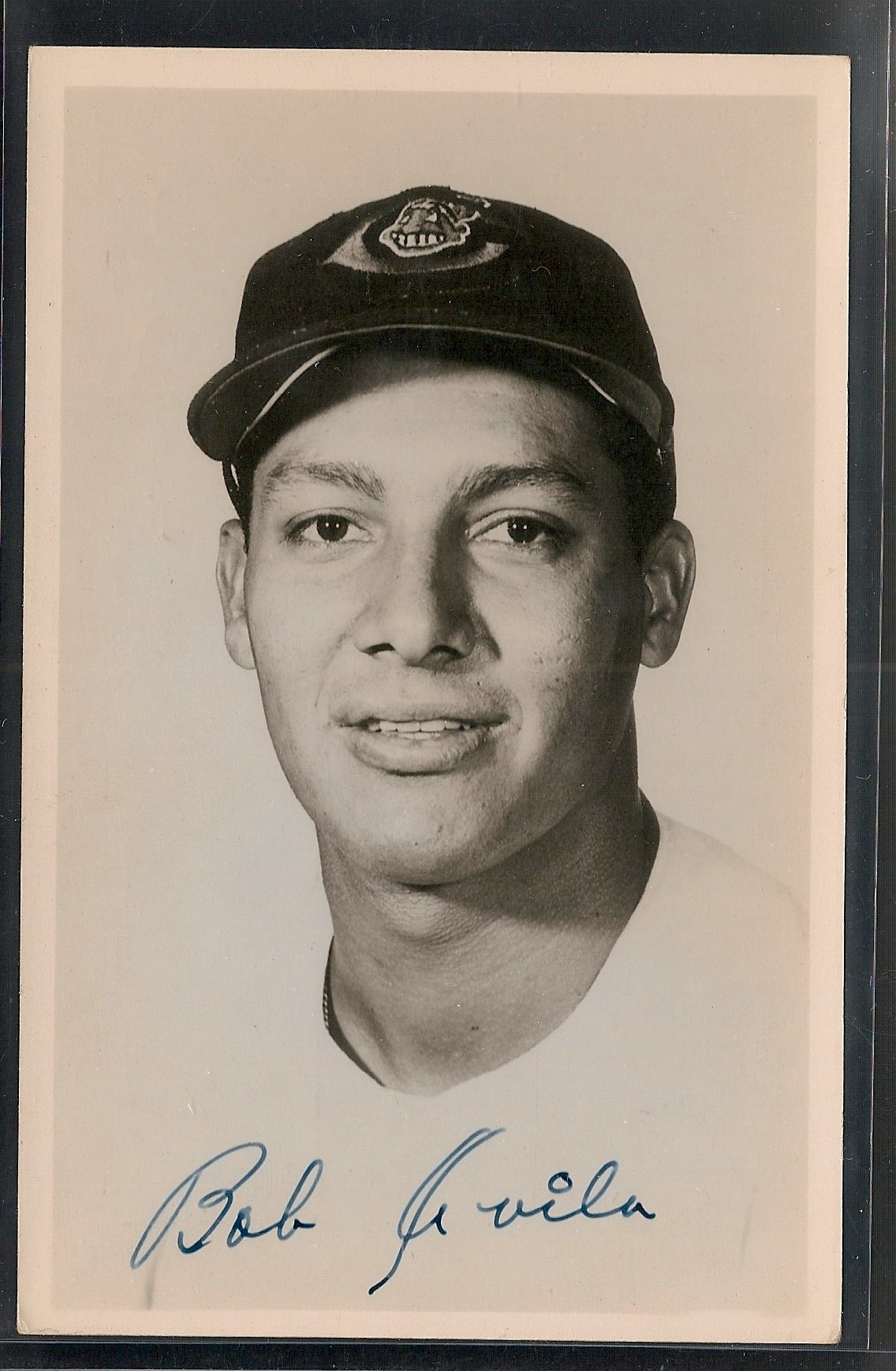 Roberto Francisco Ávila Gonzales was known as ‘Beto’ in his native Veracruz, Mexico, where his athletic skills blossomed early, landing him a professional soccer contract at the tender age of 14. Avila’s father was a successful attorney, and pushed young Beto to pursue a legal career. But the teenager Avila read a book about baseball and taught himself the game. By the age of 19 (1943) he was playing professionally in the rapidly growing Mexican League, where he made his mark as a slick fielder, an excellent bunter and baserunner, and a natural hitter.
Roberto Francisco Ávila Gonzales was known as ‘Beto’ in his native Veracruz, Mexico, where his athletic skills blossomed early, landing him a professional soccer contract at the tender age of 14. Avila’s father was a successful attorney, and pushed young Beto to pursue a legal career. But the teenager Avila read a book about baseball and taught himself the game. By the age of 19 (1943) he was playing professionally in the rapidly growing Mexican League, where he made his mark as a slick fielder, an excellent bunter and baserunner, and a natural hitter.
His background in soccer, and his natural dexterity with his feet, led Avila to perfect the practice of kicking the ball from an infielder’s glove when he slid into a base. This technique was not always appreciated by the opponent, but the aggressive and daring Avila was never deterred.
By the mid-40’s, Beto Avila was a star in Mexico. From 1945-48, he was among the league leaders in batting average, and his speed always had him near the lead in stolen bases and triples as well. After he hit .359 in 1947, Leo Durocher and Branch Rickey offered Avila a contract with the Brooklyn Dodgers, but before he could sign, Durocher was suspended from baseball, and Rickey signed another second baseman...a guy named Jackie Robinson.
Some reports say Avila turned down Rickey’s offer of $10,000, but Avila told the L.A. Times in 1962, “Mr. Rickey offered me $9,000, but I wanted $10,000, I think he would have given me what I wanted if he hadn't had Jackie Robinson.
Rickey made history with Robinson, but the decision worked to the Indians’ benefit. A year later, after winning the Mexican League batting title in 1948 with a .346 average, Avila signed with Cleveland for $17,500, and made his debut with the major league club in 1949 as the backup to the Tribe’s regular second baseman, Joe Gordon.
---
“Everybody knows who Avila was in Mexico. He was an inspiration, of course, for Mexican ballplayers to follow to the States and play in the major leagues. He did a good job. Everybody knows and recognizes what he did.” - Fernando Valenzuela, former Dodger pitcher, and a native of Navojoa, Mexico.
---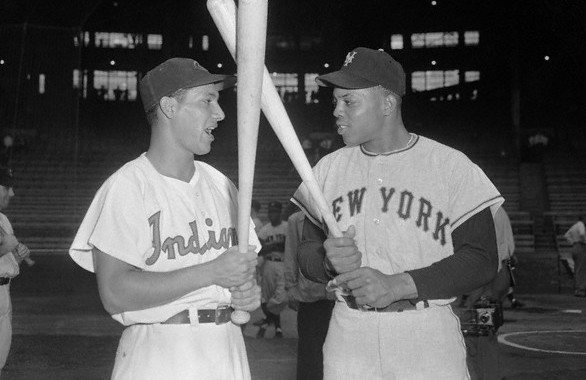 Now known as “Bobby” as a professional player in Cleveland, Avila didn’t play regularly until the 1950 season, but from ‘50-’52, he hit .299, .304, and .300, making the All-Star team in ‘51 and finishing 10th in the AL MVP voting. On June 20, 1951, Avila hit three home runs, a double and a single in a 14-8 Indians’ victory over Boston at Fenway Park. He led the AL in triples in 1952 with 11.
Now known as “Bobby” as a professional player in Cleveland, Avila didn’t play regularly until the 1950 season, but from ‘50-’52, he hit .299, .304, and .300, making the All-Star team in ‘51 and finishing 10th in the AL MVP voting. On June 20, 1951, Avila hit three home runs, a double and a single in a 14-8 Indians’ victory over Boston at Fenway Park. He led the AL in triples in 1952 with 11.
The average slipped a bit to .286 in 1953 before he exploded to win the AL batting crown at .341 in the magical season of 1954, becoming the first Latino to win a batting title in major league baseball. He beat out another Latin player, Cuba’s Minnie Minoso (.320) for the title, although Ted Williams hit .345, but due to injuries, failed to qualify for the title with enough at-bats. Avila started out in Cleveland as the leadoff man in the order, but was soon moved to the second spot to take advantage of his bunting and contact hitting abilities.
Avila led the AL in sacrifice hits in both ‘54 and ‘55, but the smallish second baseman had some punch as well. In his career year of ‘54, Avila (pictured at right with Willie Mays during the '54 World Series) had 27 doubles, 15 home runs and 67 RBI. He had 10 or more homers three other times in his career, and finished with 80 career dingers.
Avila’s batting crown in ‘54 was remarkable in that he broke his thumb in early June, when the Yankee’s Hank Bauer slid into him at second base. He was hitting close to .400 at the time, but he played through the injury (143 games) and surged late in the season to take the title. Avila played four more full seasons as the regular Indians second baseman, but he never hit for an average over .272 after that stellar year.
---
“He has that extra something that makes a great hitter. Call it the competitive instinct…. He’s always fighting the pitcher, never choking up, and never giving an inch…. In a tough spot, I’m always glad to see Bobby coming to the plate.” — Cleveland general manager Hank Greenberg
---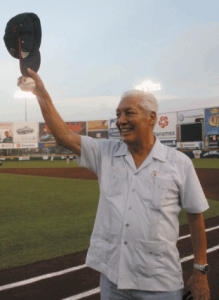 Avila was traded by the Indians’ Frank “Trader” Lane following the 1958 season, and wound up playing for three teams during the 1959 campaign. Oddly enough, he was replaced at second base in Cleveland by another guy who wore #1...Billy Martin. Avila returned to the Mexican League for the 1960 season, and went out in a blaze of glory, hitting .333 and leading the league in runs scored while also setting a league record for walks in a season.
Avila was traded by the Indians’ Frank “Trader” Lane following the 1958 season, and wound up playing for three teams during the 1959 campaign. Oddly enough, he was replaced at second base in Cleveland by another guy who wore #1...Billy Martin. Avila returned to the Mexican League for the 1960 season, and went out in a blaze of glory, hitting .333 and leading the league in runs scored while also setting a league record for walks in a season.
---
“If I ever did hit .400, they’d make me president of Mexico.” - Avila, responding to a comment from Dizzy Dean, who said Avila could be the next .400 hitter
---
Returning as a hero to his homeland, Avila got into Mexican politics, briefly serving in the national legislature, and later as mayor of his hometown of Veracruz. After retiring, he became an owner of a team in the Mexican League, and later served as president of the league. Bobby Avila died in 2004 from complications related to diabetes.
(Note: Avila was featured by our own Greg Popelka as one subject in his ongoing “Blast From the Past” series here at TCF. You can see that article here.)
Avila Obituary - Los Angeles Times
---
Other Contenders: I've got to go with Terrell Brandon for second place among Cleveland #1's. He only wore the number for a short time, but he was a two-time all-star, and once graced the cover of Sports Illustrated as "The Best Point Guard in the NBA". Not too many modern day Cleveland athletes have been called "the best" at much of anything...so it means something, especially considering the rest of the field...
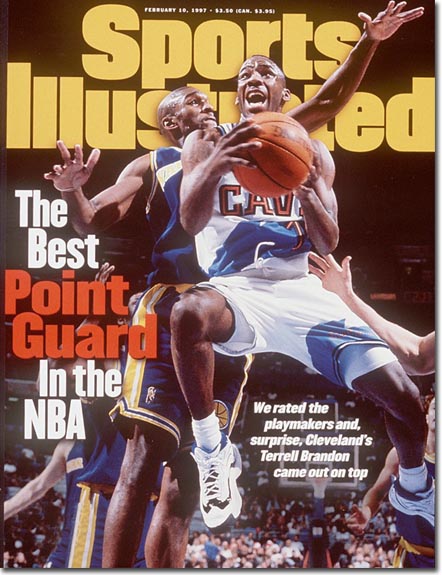 Terrell Brandon - Cavaliers - PG - (1991-1997) Brandon was the Cavs’ first round pick (11th overall) in the 1991 NBA Draft after playing his college ball at the University of Oregon. He played the first six of his 12 NBA seasons in Cleveland. Brandon was named to the All-Star team twice as a Cavalier, and in four of his first five seasons in the league, the Cavaliers were in the playoffs. In his two All-Star seasons (1995-96 and 1996-97) he averaged over 19 points and 6 assists per game. (Note: Brandon wore #1 for just one season in Cleveland, later switching to #11)
Terrell Brandon - Cavaliers - PG - (1991-1997) Brandon was the Cavs’ first round pick (11th overall) in the 1991 NBA Draft after playing his college ball at the University of Oregon. He played the first six of his 12 NBA seasons in Cleveland. Brandon was named to the All-Star team twice as a Cavalier, and in four of his first five seasons in the league, the Cavaliers were in the playoffs. In his two All-Star seasons (1995-96 and 1996-97) he averaged over 19 points and 6 assists per game. (Note: Brandon wore #1 for just one season in Cleveland, later switching to #11)
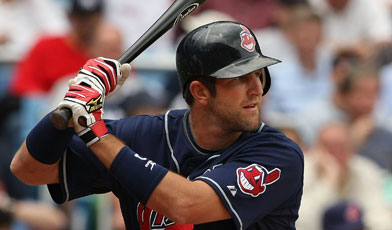 Casey Blake - Indians - 3B - 2003-2008 - Blake played six seasons as Indians mostly at third base, but also at first and in the outfield. He batted .266, with 116 homers and 417 RBI (avg. season - 19 HR, 70 RBI). Blake signed as a free agent with the Tribe after being released by Minnesota in 2002. A steady, durable player, who came to be respected more by Tribe fans after he left the organization and became a valuable contributor to the Dodgers, although his offensive production for them was down from his CLE numbers. Blake may be best remembered for being traded in the deal with the Dodgers that brought Carlos Santana to the Tribe in 2008.
Casey Blake - Indians - 3B - 2003-2008 - Blake played six seasons as Indians mostly at third base, but also at first and in the outfield. He batted .266, with 116 homers and 417 RBI (avg. season - 19 HR, 70 RBI). Blake signed as a free agent with the Tribe after being released by Minnesota in 2002. A steady, durable player, who came to be respected more by Tribe fans after he left the organization and became a valuable contributor to the Dodgers, although his offensive production for them was down from his CLE numbers. Blake may be best remembered for being traded in the deal with the Dodgers that brought Carlos Santana to the Tribe in 2008.
Daniel “Boobie” Gibson - Cavaliers - PG/SG (2006-Present) - Gibson was a 2nd round pick in the 2006 draft out of the University of Texas. He has played all of his seven NBA seasons in Cleveland, averaging 8.1 points and 2.0 assists per game.
Michael Jackson - Browns WR - A 6th round pick of the Browns in 1991, Jackson had a few decent years under Bill Belichick in Cleveland, catching in excess of 40 passes in the ‘92, ‘93, and ‘95 seasons, with 7,8 and 9 touchdowns respectively in those years, before leaving after 1995 with the rest of the roster to become a Baltimore Raven for the last three years of his career. He wore #1 for his first two years in Cleveland before switching to #81. He had his best season in ‘96 with Baltimore, with 76 catches and an NFL-leading 14 TD receptions.
---
Mention (not necessarily honorable):
Tony Fernandez - Indians 2B - 1997
Luis Valbuena - Indians IF - 2009-2011
Glenallen Hill - Indians OF - 1991-1993
---
- NBA Announces 2013-2014 Schedule
- Browns Ink Sharknado
- Sharknado A No-Show For Rookie Camp
- Trent Richardson Out Until Training Camp
- Browns Sign Brandon Jackson
- Carrasco Suspended Eight Games
- Browns Add to Wide Receiver Depth with David Nelson
- Browns Need to Learn from Past Draft Mistakes
- Browns Release Chris Gocong and Usama Young
- Browns Missing on Grimes Disappointing, But Not The End
The TCF Forums
- Chris Grant's first 3 drafts
Kingpin74 (Tuesday, January 21 2014 10:13 AM) - The 2014 Offseason Thread
googleeph2 (Tuesday, January 21 2014 9:36 AM) - 2015 Recruiting
furls (Tuesday, January 21 2014 6:57 AM) - Mike Brown
YahooFanChicago (Monday, January 20 2014 11:15 PM) - Movies coming out
HoodooMan (Monday, January 20 2014 9:34 PM) - 2014 Hoops Hockey Hijinx
jpd1224 (Monday, January 20 2014 4:44 PM) - 2014 Recruiting
jclvd_23 (Monday, January 20 2014 2:26 PM) - Wish List - #4 Pick
Hikohadon (Monday, January 20 2014 1:26 PM) - Official- Browns Coach Search/Rumors
OldDawg (Sunday, January 19 2014 6:48 PM) - #1 overall pick Anthony Bennett
TouchEmAllTime (Sunday, January 19 2014 1:28 PM)


